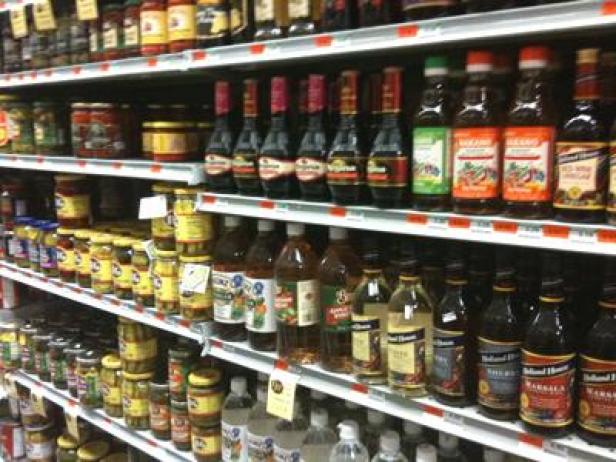Aisle by Aisle: Smart Picks For Condiments

Most condiment aisles are jam-packed with all kinds of sauces, mustards, mayos and combinations of the three, and finding healthy options can be tricky. You don’t have avoid condiments altogether. It's all about using them wisely.
The majority of condiments you’ll find contain high amounts of sugar, salt, oil -- or, at their worst, too much of all three. This doesn’t make them automatically bad for you, but it does mean that reading labels is a must! Barbecue sauce just wouldn’t be the same without sugar, and mayo isn’t mayo without oil, but some brands take it to the extreme. Be on the lookout for highly processed sweeteners such as high fructose corn syrup (HFCS) and other foods additives listed in the ingredients. A good rule of thumb: if you can't pronounce all the ingredients, you probably don't want to try what's inside.
Also remember portion control. Condiments are supposed to enhance the flavor of a dish, not replace it. Use them sparingly (though even I've been known to drown things in ketchup from time to time). Stick to one tablespoon portions.
These sauces usually come along with hefty amounts of sugar and salt. I tend to buy organic ketchup, I just think it tastes better. Trader Joe’s makes a good one and so does Annie’s. When it comes to the best bottled BBQ sauces, check out our top picks.
The sodium content in steak sauces varies a lot. Some have as much as 12% of the daily recommendation for sodium in one tablespoon. I like Peter Luger's sauce, which has half that much salt. To help keep your salt intake under control, use measured portions and push the salt shaker aside if you’re going to be using these types of condiments.
The main issue with soy sauce is the sodium; always reach for reduced sodium varieties. Sauces such as hoisin and teriyaki pack a double whammy -- they include soy sauce as a main ingredient and contain high amounts of sugar. Many of these Asian sauces have HFCS listed as the first ingredient; Ken’s and Soy Vay are two brands that don’t.
Salsa and hot sauce are often smart condiment picks. Just beware; some companies do sneak in sugar and other sweeteners. Good quality salsas use fresh vegetables ( Green Mountain Gringo is the best jarred salsa I know of, and you can always whip up a homemade version). Hot sauces, meanwhile, are made from vinegar and spices and are so flavorful that you typically only need a little bit. Like many condiments, some hot sauces contain lots of sodium, so check those labels (a few dashes here and there is fine). My top picks for hot sauces are Cholula or traditional Tabasco.
Mustards are considered a healthy condiment choice and, in many cases, they are. They can be super flavorful and low in fat and added sugar, but watch out for some of those mustard blends. Honey mustards can be high in calories (some also have added oils that up the fat content), and a few mustard dressings are actually mixtures of mustard and mayonnaise (more fat in those, too). While you're eyeballing the label, check the sodium content; some contain way more than others. A simple spicy or Dijon mustard is your best bet -- try Gulden’s and Maille. If you're really craving a honey mustard, Boar’s Head makes a honey mustard that’s relatively low in sugar.
One tablespoon of regular mayonnaise has about 90 calories and 10 grams of fat! Obviously, if you're watching what you what you eat, use full-fat mayo in strict moderation. The fat in most mayos comes from a combination of eggs and vegetable oils –- not unhealthy foods, but the calories and fat can add up quickly! The light and reduced-fat mayos contain more additives, so they aren’t exactly healthier choices. You're better off sticking to modest portions (1 to 2 teaspoons) and using it every once in a while. You may see canola oil mayonnaise on the self; it has similar amount of calories and fat but is made from healthier oils ( Spectrum is a great brand).
Pickles are all about salt, and relish is all about pickles and sugar. These condiments are low in fat and calories, and most of the calories come from sugar. An average (whole) pickle contains more than 600 milligrams of sodium -– that’s almost 30% of your daily allowance. Plus, both pickles and relishes are commonly sweetened with sugar or HFCS. Even though they are low calorie (and yummy), I wouldn’t recommend munching on them daily. When I do buy pickles, I like to stay out of the condiment aisle and pick up the fresher ones at the deli counter or, better yet, from my local farmers market. In my experience, it’s virtually impossible to find a relish that doesn’t contain HFCS, so use them sparingly or consider chopping up some pickles to make your own.
































